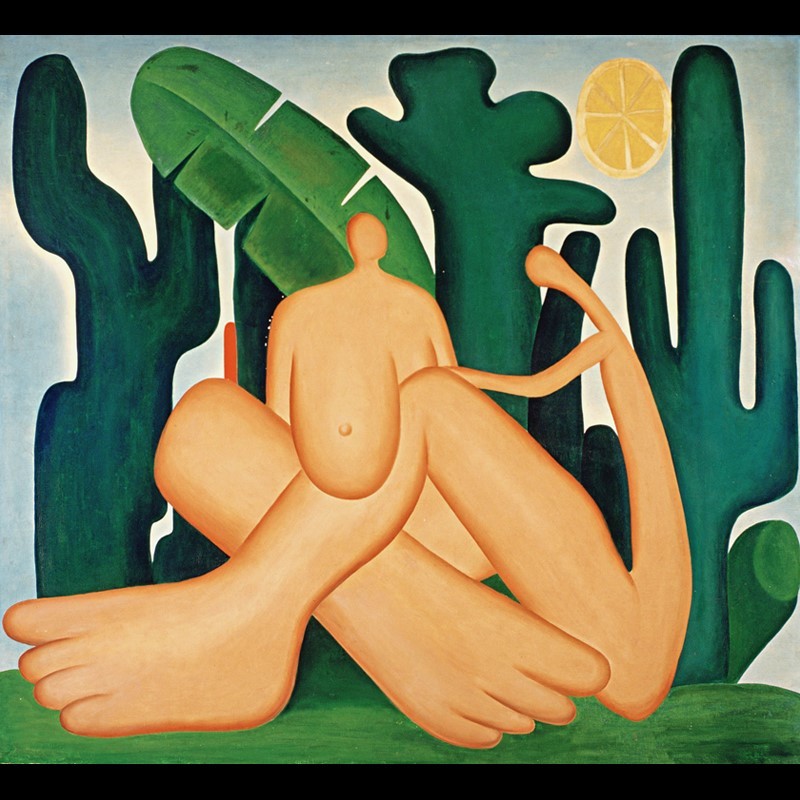Tarsila Do Amaral
When we look at A Negra (Black Woman) (1923) we see the European conception of Indigenous identity. The Primitivist and Naïve art movements of the time were defined by their depictions of Indigenous people (whether they be African, South American, or otherwise) as simple, closer to the Earth, and a tool by which to experiment with and progress the aesthetic of modern European Art. Despite being from South America, her own cultural disassociation is fairly clear in Black Woman as Do Amaral employs the structural qualities of a European artist depicting Indigenous people (e.g. exaggerated cubist features, nudity, etc).
However, Anthropophagy (1929) shows an artist powerfully reclaiming stereotypical depictions of Latin American people and using it as a starting point for unravelling the colonial power dynamic within the art world at the time. This artwork, which incorporates Black Woman, defines the Latin American identity as one with the ‘cannibal’. As suggested by De Andrade, their unique identity is defined by its capacity to consume European conceptions and grow beyond them. By claiming these primitive and naïve depictions as their own, the artists are able to begin to redefine themselves. In this way, Do Amaral is integral to the canon of Latin American art as it evokes the starting point whereby the art of a Latin American artist need not be judged in reference or comparison to a European counterpart. Instead they could acknowledge colonial concepts and actively begin to move away from them.

